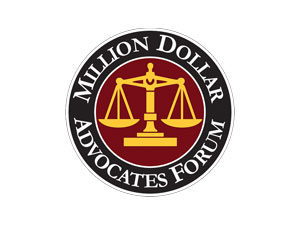$5.5M
$5.1M
$4.2M
$2.9M
$2.8M
$2.5M
$2.4M
$2.2M
Can You Sue for Hospital-Acquired Infections (HAI)?
Hospital-acquired infections can be critical for patients of all ages and may pose serious safety threats. In some cases, medical lawsuits are a valid and necessary response to negligent medical care.
What Is the Most Common Hospital-Acquired Infection?
Approximately one in 30 hospital patients develop a healthcare-related infection. Although this health issue is extremely common in the United States, many patients are unaware of the risk.
A hospital-acquired infection is discovered after the time of admission. These infections are known as nosocomial. Long-term health care facilities, as well as shorter hospitalizations, can both result in nosocomial infections due to improper healthcare.
Common hospital-acquired infections stem from catheter use, exposed surgical sites, central line malfunction, and a variety of other sanitary-based issues. Infection symptoms range from a productive cough to an altered mental state. If they are not treated, these infections can pose serious health risks.
One of the most serious, yet common, hospital-acquired infections is related to the bloodstream. Central line-associated bloodstream infections are responsible for thousands of deaths per year.
A central line is a type of catheter that can be placed in the neck, groin, or chest. This tube allows medication and other fluids to travel directly into the patient’s vein. With long-term use, central lines can remain in place for months. This increases the possibility of serious infections.
Hospital Protocol
Central line-associated bloodstream infections happen when bacteria enter the bloodstream. This form of treatment is properly conducted when healthcare providers follow strict guidelines upon insertion. It is critical that the line remains sterile and is frequently checked for potential malfunction.
To properly insert a central line, hospital staff should use an aseptic technique to keep the catheter clean. This involves thoroughly washing hands before putting on sterilized gloves. A mask, gown, and cap are also recommended to reduce potential bacteria.
Next, the site of insertion must be cleaned. Throughout the procedure, hospital staff must only use sterilized equipment. The catheter should be covered with clear plastic or gauze once it is secured in place.
A central line needs to be examined every day. Hospital staff should check to see if the catheter is in the same spot in addition to looking for signs of infection. This type of infection is preventable.
Types of Nosocomial Infections
Treatment involving invasive devices can cause nosocomial infection. Catheter-associated urinary tract infections and ventilator-associated pneumonia are common for both short-term and long-term patients.
The kind of catheter used for ventilation is placed through the mouth, neck, nose, or mouth. If germs enter the breathing tube, ventilator-associated pneumonia can occur. Lung infections are serious conditions and can be deadly. Currently, the CDC provides guidelines to help healthcare professionals prevent ventilator-associated pneumonia.
In addition to catheters, antibiotic medication can also cause nosocomial infection. The overuse of antibiotics has led to a potentially life-threatening infection in the large intestine due to the bacterium, Clostridioides difficile. This infection typically affects older adults living in long-term care facilities. According to the Mayoclinic, approximately 200,000 people are infected every year.
Symptoms of A Nosocomial Infection
Symptoms of this particular infection occur after a patient has received healthcare. Individuals who have recently been treated in the ICU are more likely to experience symptoms from nosocomial infections.
A hospital-acquired infection usually occurs 48 hours after admission, but symptoms can appear up to 30 days after an operation. Common signs include fever, shortness of breath, a burning sensation when urinating, headache, nausea, and diarrhea. This is not a complete list of symptoms related to nosocomial infections.
Staph infections are frequently found in hospital settings and have slightly different symptoms. Patients with staph infections often experience issues with their skin such as acne or flaking. Staph infections usually occur at incision points where there is an opening in the skin. Regardless of age or sex, any individual can acquire a staph infection.
Skin infections can occur anywhere on the body. Common infections occur where catheters are placed. Urinary catheters and chest tubes are particularly sensitive areas for germs and bacteria. Depending on the infection, joints can feel sore and stiff for several days.
Unlike many other infections, staph can spread from one person to another. This is especially problematic in hospitals. Skin-to-skin contact can easily transmit a patient’s infection to a nurse or doctor. If healthcare staff does not take proper precautions, poor sanitary conditions can lead to the spread of germs.
Wrongful Death
Certain patients have higher risk factors for infection. Older patients are especially susceptible to infection and may experience longer hospital stays. Those with autoimmune diseases may also experience a higher rate of infection. Regardless of a patient’s risk factor, medical care must accommodate patients from all health backgrounds.
Due to overcrowding and lack of care, medical negligence is not uncommon. Wrongful death can occur in any hospital. If an infection is caused by poor sanitary conditions, certain illnesses can result in loss of life.
Septic Shock
Sepsis is a dangerous medical emergency resulting from infection. Sepsis usually begins in the lungs, but ultimately affects multiple body parts. Even urinary tract infections will trigger sepsis if left untreated.
The signs of sepsis include a high heart rate coupled with low blood pressure. Confusion or disorientation is common as the infection progresses. Extreme discomfort, fever, and shortness of breath are all indicators of a potentially life-threatening health condition.
If sepsis is caught early, it can be treated with certain antibiotics and fluids. Since the condition typically progresses quickly, a patient’s health can deteriorate in a matter of days. Septic shock happens when the patient is no longer able to respond to fluid replacement therapy.
Untrained or neglectful hospital staff may not recognize these symptoms. Patients who are not immediately treated within the hour face an increased risk of mortality. In the event that a patient dies as a result of medical malpractice, a wrongful death lawsuit can be filed.
Can You Sue a Hospital if You Get an Infection?
Most hospitals have health guidelines to prevent nosocomial infection. These protocols can include how to keep an incision clean, sterilizing medical tools, and a laundering schedule for sheets and gowns.
Hospitals can be sued for a variety of nosocomial infections. Central line-associated infections may be one of the most common infections, but it is not the only one. Ventilator-associated pneumonia and lower intestinal infections are also life-threatening medical issues that can be caused by staff.
Hospitals that fail to follow protocol are liable for damages. Regardless if the guidelines were willfully disregarded or forgotten, healthcare facilities that do not provide proper care can be held legally responsible. Examples of medical malpractice lawsuits include delayed diagnosis, failure to monitor patients, and failure to properly treat patients. Medical negligence can result in death.
Building a case for medical malpractice may take time. There are several considerations outside of the infection itself that are often examined. The relationship between the patient and healthcare provider may be assessed as well as the accepted standards of the medical community. If a medical care provider failed to test the patient for potential infections associated with hospital stays, this information is important to disclose.
Medical Malpractice
Medical malpractice suits benefit clients in a number of ways. Clients can ensure the safety of other patients by holding medical institutions accountable. Compensation may also be awarded for pain and suffering. Infections can cause damage to careers, families, and patients. By filing a lawsuit with malpractice professionals, the process can be done smoothly and accurately.
There are multiple factors that influence a lawsuit. Patients who contract an infection within two weeks of being discharged from a hospital are more likely to prove malpractice. The Hannon Legal Group helps clients navigate the legal system with specialized representation.
James Hannon has the highest rating for legal skill and ethics. Recognized as one of the top 100 Trial Lawyers by the National Trial Lawyers Association, James Hannon has won numerous medical cases. Hospital guidelines are set in place to ensure the safety of all patients regardless of age, location, and gender. To keep standards high, legal attorneys are essential for all future patients.















